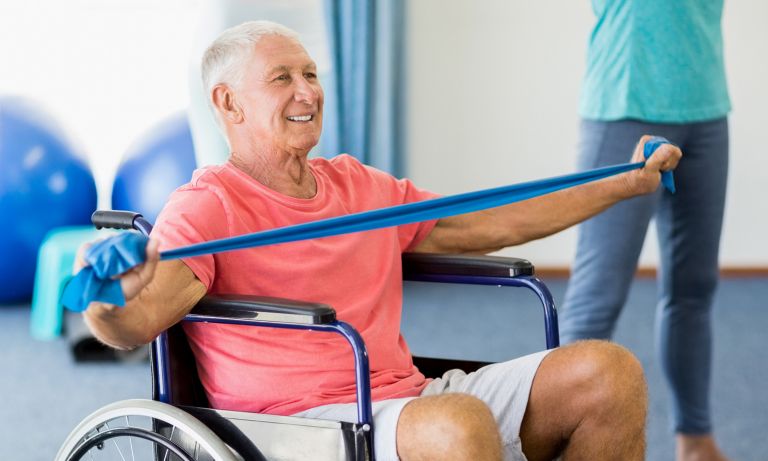I want to dedicate this article to people who are physically challenged (people with limited mobility) but still want to live an active life. Exercise is important for all of us, whether we are limited in movement or not. However, for those of us who are physically challenged, keeping fit through exercise can be a challenge, given that we have mobility issues to deal with. The limited mobility can be due to overweight, illness, disability, or even injury.
Does Limited Mobility Have to Prevent Us from Keeping Fit?
Absolutely not. Life with limited mobility doesn’t mean embracing a sedentary lifestyle; instead, it calls for a proactive approach to ensure a fulfilling and longer life. Establishing a tailored workout routine is crucial to overcoming physical challenges and enhancing overall well-being. Fortunately, there’s a plethora of mobility exercises designed to accommodate individuals with movement issues, and they cater to various age groups.
For the younger crowd, mobility exercises may involve stretching, yoga, and low-impact aerobics. These activities contribute to overall flexibility and fitness. On the other hand, for older adults, mobility exercises can be as simple as walking and chair exercises. These accessible exercises are commonly integrated into mobility assistance senior home activity programs, promoting an active and engaging lifestyle for individuals with limited mobility.
Below, there is detailed information of how these exercise can affect various parts of the body.
Appropriate Exercises for People with Limited Mobility
It should not be lost on us that every type of exercise has health benefits attached to it. In fact, mobility problems make some exercises even easier. However, a typical exercise routine for the physically challenged should incorporate the following types of exercises, which are also essential for people without physical disabilities.
Flexibility training: This type of exercises help to improve our motion range, minimize stiffness, reduce pain, and reduce the chances of injury. Yoga and stretches are categorized under flexibility exercises. So, it doesn’t matter whether our legs cannot move normally, we can still benefit from this type of exercise. Exercising especially in water has proved beneficial for those of us with mobility issues, as it is gentle on joints and muscles. It is still very possible to perform cardio even if we are confined to a wheelchair.
Strength exercises: These exercises help us in building muscle resistance, preventing falls, and improving balance, among other benefits. If we are experiencing limited mobility in our lower parts (legs), for instance, our focus in strength training will be in improving the parts of the body. The opposite is true; if we are experiencing mobility problems in the upper parts (e.g. shoulder injury), then our focus should be in improving the lower parts, such as the core and legs.
Tips for Success
Success in limited mobility exercises comes when we do certain things right. As I have said before, the limited mobility could be as a result of illness, injury, or weight issues.
Medical clearance: So, it may be a good idea to first consult with our medical doctors about the type of exercises to engage in. We must not forget that some exercises can make our physical conditions even worse, and that is why a recommendation from the doctor is necessary. Once we get an all-clear from the medic, we can proceed with our exercise regime.
Having a fitness coach: With a training coach, we don’t have to worry about what kind of exercises will fit our physically challenged bodies. And let me be a bit assertive here; a fitness coach can be of great benefit for anyone, despite their physical condition. And while exercising by ourselves is completely possible, it is still a challenge to most people and that is why results of self-training take too long to manifest. A training coach knows which types of exercise are appropriate for every individual trainee. They help device a workout regime that can work for each of us, based on our individual differences.
Starting small: We shouldn’t expect to start with 30 push-ups if we are obese, for instance. This will be injustice to our body, and we may end up injuring ourselves in the process. Fitness coaches recommend that we start with the activities we enjoy, while setting realistic short-term goals. It doesn’t matter how small or simple a fitness goal is, achieving it will motivate us to do even better and work towards achieving higher goals.
Listening to our body: We should immediately stop training when we feel pain in our body. The pain may be a sign of some injury caused by the training. Additionally, we should avoid moving the injured parts during exercise.



